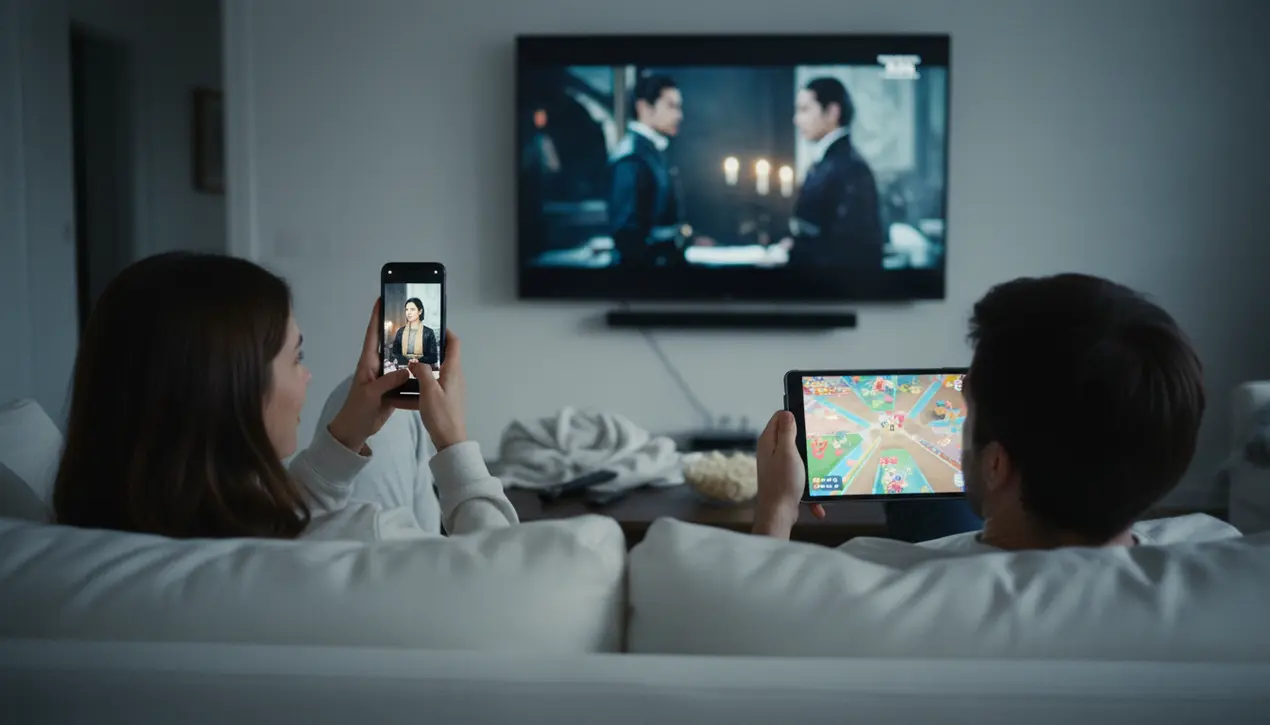- News
- culture-trends
- The Great Unfocusing: How TikTok and the Second Screen Are Forcing a TV Revolution

Entertainmentculture & trends
The Great Unfocusing: How TikTok and the Second Screen Are Forcing a TV Revolution
JE
Jessica Stone
14 hours ago7 min read2 comments
The modern living room is a battleground for attention. As viewers increasingly split their focus between a prestige drama on the main screen and an endless TikTok scroll on their phone, the television industry is undergoing a radical transformation to survive.This is not a minor adjustment but a fundamental re-engineering of content, driven by the economics of our distraction. The most visible symptom is the explosive rise of the vertical micro-drama.Designed for the For You Page, these are hyper-condensed narratives filmed in portrait mode, with runtimes as short as 45 seconds and plots engineered for maximum, instantaneous impact. From Kris Jenner to Disney, major players are investing heavily, betting that the future of entertainment is mobile-first and bite-sized.The influence, however, penetrates deeper than new formats. A recent n+1 magazine report revealed a subtler shift in traditional television writing.According to the findings, Netflix executives are allegedly encouraging showrunners to make dialogue more explicit—having characters verbally state their motivations and actions. The goal is to ensure a viewer who is only half-paying attention, with the show on in the background, can still follow the plot without getting lost.This directive is not a simplistic move to 'dumb down' content, as industry analyst Julia Alexander of Puck News explains. It is a strategic adaptation to a brutal new competitive landscape.TikTok, YouTube Shorts, and Instagram Reels are no longer complementary distractions; they are the primary competition. Unlike a magazine glanced at during a commercial break, the second screen is a bottomless, algorithmically-optimized vortex designed to be more compelling than any narrative lull.This reality is squeezing the business model that once supported the 'golden age' of complex, slow-burn television. With an infinite array of content vying for a finite number of viewing hours, streamers are pushed toward producing more content, faster and cheaper.This has given rise to what critics label 'the slop'—easily digestible, trope-heavy movies and series that reliably generate massive viewership numbers, such as the popular genre of holiday rom-coms. It is a straightforward case of supply meeting demonstrable demand.Yet, within this content glut lies a potential silver lining: the dawn of a 'great sorting. ' As generative AI makes it easier than ever to flood the market with low-effort content, from AI-scripted shows to AI-assisted micro-dramas, audiences may reach a saturation point.This oversupply could, in turn, spark a powerful counter-movement—a renewed craving for authentic, high-quality storytelling. In this future, premium streaming services like Apple TV+ or a specialized tier of Netflix could evolve into the curated art houses of the digital era.They would justify a higher subscription fee by offering a refuge from the algorithmic chaos, a dedicated space for the next critically acclaimed series to thrive. While this would mean a smaller, more exclusive industry with fewer opportunities for creators, it would reaffirm a timeless principle: no amount of viral, short-form content can fully replace the profound human need to be absorbed in a masterfully told, long-form story. The path forward is chaotic, but the destination suggests that powerful storytelling, like a classic film, never truly goes out of style.
#TikTok
#micro-dramas
#streaming
#viewer attention
#Hollywood
#content trends
#featured
Stay Informed. Act Smarter.
Get weekly highlights, major headlines, and expert insights — then put your knowledge to work in our live prediction markets.
Comments
Loading comments...
© 2025 Outpoll Service LTD. All rights reserved.